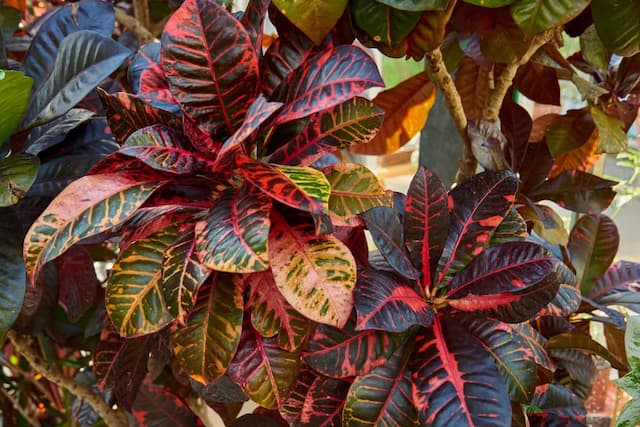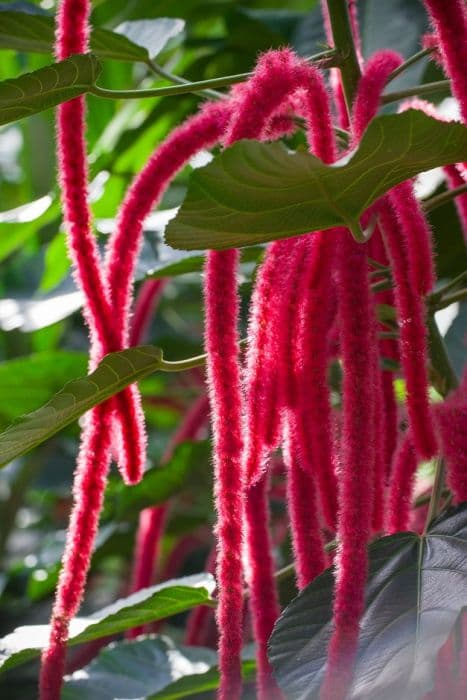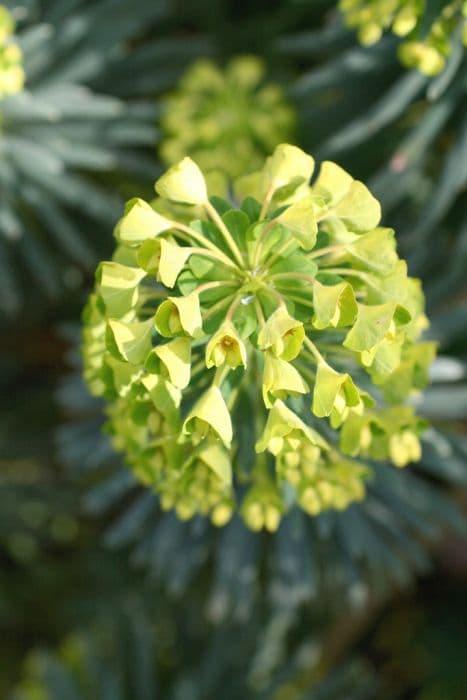Candelabra Tree Euphorbia ingens

ABOUT
Commonly known as the candelabra tree, the Euphorbia ingens is a succulent with a distinctive appearance that closely resembles that of a cactus. It's recognized by its thick, upright, columnar branches that spread out from a central point, which gives it a candelabra-like silhouette. The surface of these branches is generally green with a slightly blue or greyish tinge, and they may display small, horizontal ridges or lines. The skin of the plant is smooth and tough, and along the ridges of its branches, it features pairs of small, sharp spines. These spines are typically short, offering some protection and deterring would-be grazers. The candelabra tree blooms with small, yellow flowers that grow in clusters, often appearing at the tips of the branches. After flowering, the plant can produce small, round fruit that is typically a purplish color. The overall form of the candelabra tree gives it a sculptural quality that is both striking and architectural, allowing it to stand out in landscapes. Despite its cactus-like appearance, it is important to note that it does not have true spines like a cactus but has thorns and that it belongs to a different group of succulent plants.
About this plant
 Names
NamesFamily
Euphorbiaceae.
Synonyms
Candelabra Tree, Naboom, Common Tree Euphorbia, Candelabra Euphorbia.
Common names
Euphorbia ingens E. Mey. ex Boiss., Euphorbia candelabrum var. ingens (E. Mey. ex Boiss.) Bruyns.
 Toxicity
ToxicityTo humans
The candelabra tree, while not typically fatal if ingested, can be quite toxic to humans. Its milky sap contains powerful irritants and can cause symptoms if it comes into contact with skin or mucous membranes. Upon ingestion, symptoms such as burning pain in the mouth and throat, nausea, vomiting, and diarrhea can occur. If the sap contacts the skin or eyes, it can lead to redness, pain, and swelling. In severe cases, it might cause temporary blindness. Handling the plant should be done with care, and wearing gloves is advisable to prevent skin contact with the sap.
To pets
The candelabra tree is similarly toxic to pets. The toxic components are the same irritants found in the sap that affect humans. If a pet ingests part of the plant or comes into contact with its sap, it might exhibit symptoms like vomiting, diarrhea, drooling, or pawing at the mouth due to irritation. More severe reactions can include skin and eye irritation, and if the sap enters the eyes, potential temporary blindness. It's important to prevent pets from ingesting or coming into contact with the plant and to consult a veterinarian if exposure occurs.
 Characteristics
CharacteristicsLife cycle
Perennials
Foliage type
Evergreen
Color of leaves
Green
Flower color
Yellow
Height
30 feet [9 meters]
Spread
10 feet [3 meters]
Plant type
Tree
Hardiness zones
10
Native area
Africa
Benefits
 General Benefits
General Benefits- Ornamental Value: Euphorbia ingens, commonly known as the candelabra tree, is often used in landscaping and garden design for its striking appearance and sculptural form that adds aesthetic interest to any setting.
- Drought Tolerance: As a succulent, the candelabra tree is extremely drought-tolerant, making it an excellent choice for xeriscaping and water-wise gardens in arid climates.
- Low Maintenance: It requires minimal care once established, as it has low water needs and is generally pest-free, which is an advantage for those seeking easy-care garden plants.
- Wildlife Attraction: The candelabra tree provides nectar for various pollinators such as bees and other beneficial insects, contributing to the health of the local ecosystem.
- Soil Erosion Control: Its robust root system can help to stabilize soil and control erosion, especially in dry regions where other plants may struggle to survive and maintain soil integrity.
- Shade Provision: Larger specimens of Euphorbia ingens can grow quite tall, offering shade in sunny gardens or landscapes, which can be a welcome feature in hot environments.
 Medical Properties
Medical Properties- Euphorbia ingens, commonly known as candelabra tree, has a sap that contains compounds with potential medicinal properties. This sap has been traditionally used for its purgative effects.
- The plant's sap has also been used in traditional medicine for the treatment of warts and corns.
 Air-purifying Qualities
Air-purifying QualitiesThis plant is not specifically known for air purifying qualities.
 Other Uses
Other Uses- Euphorbia ingens, also known as the Candelabra Tree, can be used as a natural fencing material due to its tall growth and spiny branches, deterring animals and intruders.
- The milky latex sap of the Candelabra Tree has been used as a traditional adhesive and waterproofing agent in various African cultures.
- The wood of Euphorbia ingens is lightweight and has been utilized for crafting musical instruments such as drums in its native habitat.
- In some regions, the Candelabra Tree's branches are used as fish traps, taking advantage of its complex structure to ensnare fish.
- The tree's ability to survive in arid conditions makes it a natural choice for soil stabilization in desert reclamation projects.
- Euphorbia ingens is sometimes planted ceremonially or as a memorial tree in various cultural practices due to its distinctive and striking appearance.
- This plant's tall and sturdy structure is useful for creating living poles or supports for growing climbing plants or vines in gardens.
- The Candelabra Tree's unique silhouette and size are employed in landscape design to create visual interest and structure in large gardens or parks.
- Artisans harvest and use the plant's thick bark to create decorative items or small sculptures that showcase its textural qualities.
- In some cultures, sections of Euphorbia ingens are used as traditional floats or buoys due to the buoyant properties of its wood when dried.
Interesting Facts
 Feng Shui
Feng ShuiThe Candelabra Tree is not used in Feng Shui practice.
 Zodiac Sign Compitability
Zodiac Sign CompitabilityThe Candelabra Tree is not used in astrology practice.
 Plant Symbolism
Plant Symbolism- Endurance: Euphorbia ingens, also known as the candelabra tree, possesses a tough and resilient nature, symbolizing the ability to endure harsh conditions and persevere.
- Protection: With its sturdy and imposing form, the candelabra tree is often seen as a symbol of protection, representing a guardian that shields against negative influences.
- Adaptation: The candelabra tree's capacity to thrive in arid environments makes it a symbol of adaptation, illustrating the importance of adjusting to survive in various conditions.
 Water
WaterThe Candelabra Tree should be watered sparingly, as it is susceptible to over-watering, being a succulent. In the summer, water the plant once every two to three weeks with about 1 gallon of water, allowing the soil to dry out completely between waterings. In the winter, reduce watering to once a month or less, depending on the humidity of your environment. Over-watering can lead to root rot, so it is crucial to ensure good drainage and let the soil dry.
 Light
LightThe Candelabra Tree thrives best in bright, indirect sunlight or partial shade. A south-facing window with filtered light or a spot that receives morning sun and afternoon shade would be ideal. Direct sunlight can scorch its leaves, especially in the hottest parts of the day, so it's important to provide some protection during peak sunshine hours.
 Temperature
TemperatureThe Candelabra Tree prefers warm temperatures, ideally between 60°F and 80°F. It can survive in temperatures as low as 50°F, but growth may slow down. Extreme cold or frost can be detrimental; therefore, if you live in a region where the temperature drops below 50°F, it’s preferable to keep the plant indoors or in a warm, sheltered area during the colder months.
 Pruning
PruningPruning the Candelabra Tree is mainly necessary to remove dead or damaged branches and to maintain its shape. It should be done during the plant's dormant period, typically in late winter or early spring, before new growth begins. Always use clean, sharp pruning tools and cut just above a leaf node or branching point. Be cautious of the plant's sap, which can be irritating to skin and eyes.
 Cleaning
CleaningAs needed
 Soil
SoilEuphorbia ingens, commonly known as Candelabra Tree, requires well-draining soil with a mix of potting soil, coarse sand or perlite, and some peat. The ideal pH should be neutral to slightly acidic, approximately between 6.0 and 7.5 for optimal growth.
 Repotting
RepottingThe Candelabra Tree should be repotted every two to three years or when it has outgrown its current pot. It is essential to use fresh soil mix and a pot size slightly larger than the previous one.
 Humidity & Misting
Humidity & MistingCandelabra Tree thrives in average household humidity levels; excessive humidity is not required. It tolerates dry air, making it an excellent choice for typical indoor environments.
 Suitable locations
Suitable locationsIndoor
Place Candelabra Tree in bright indirect light, away from drafts.
Outdoor
Position Candelabra Tree in full sun to partial shade.
Hardiness zone
10-11 USDA
 Life cycle
Life cycleThe life of Euphorbia ingens, commonly known as the Candelabra Tree, begins with seed germination, which occurs in warm, moist soil conditions, usually after rain. Once germinated, the seedling grows rapidly, exploiting sunlight and nutrients to establish a strong root system and a sturdy stem. As it matures, the plant develops its characteristic succulent branches that resemble a candelabra, becoming a prominent feature of its native arid landscape. The Candelabra Tree flowers in the warmer months, producing small, yellowish-green flowers that are often inconspicuous among the large branches. If pollinated, these flowers will develop into fruits containing seeds that, when mature, are dispersed by wind, gravity, and sometimes animals, to begin a new generation. Throughout its life cycle, which can span several decades, the Euphorbia ingens is adapted to survive in drought-prone environments, storing water in its thick stems and shedding leaves to minimize water loss.
 Propogation
PropogationPropogation time
Spring-Early Summer
The common name for Euphorbia ingens is the Candelabra Tree. For this succulent tree, the most popular method of propagation is through cuttings, ideally performed during the warmer seasons like spring or summer when the plant has the most vigor and the conditions support efficient rooting. To propagate, a healthy branch needs to be selected and cleanly cut using a sharp, sterilized knife or a pair of secateurs. The cuttings should be allowed to dry and callus over for about a week in a warm, dry place away from direct sunlight. This step is critical to prevent rotting when the cutting is planted. Once callused, the cutting can then be planted in a well-draining cactus or succulent mix, ensuring the soil is not kept overly wet to prevent rot. With proper warmth and occasional watering, the cutting should root and eventually establish itself as a new plant within a few weeks to a couple of months.

![Poinsettia [Jester Red]](/_next/image?url=https%3A%2F%2Fplants-admin.emdemapps.com%2Fimages%2Fplants%2F%2Fimages%2F604b55de5eb2c.png&w=640&q=75)







